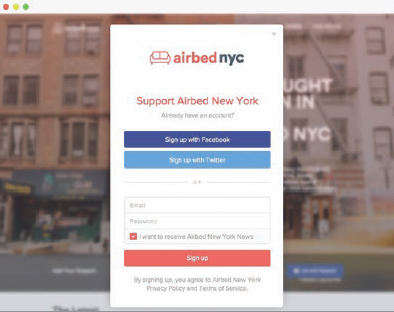Enhancing Customer Identity Management: 3 Pillars of Social Login

By Stefan Kenig, CEO and Co-Founder of Hull
In the quest for simple and intuitive digital experiences, website visitors are growing increasingly frustrated with having to create multiple usernames and passwords for each site they visit.
With email passwords, social media passwords, banking passwords, etc., the last thing most want is to have to remember another login to make a simple purchase. In fact, in a recent Web Hosting Buzz report, 86 percent of retail customers say that they are bothered when they have to create a new login and username.
For this very reason, social login has become increasingly popular among retailers looking to turn website visitors into returning customers. Retailers know that improving conversion rates (e.g. purchases) begins with improving the customer experience. Allowing visitors to register with a simple click to log in with their existing social media profile from Facebook, Twitter or LinkedIn eliminates the need for long registration forms, verifications and password recovery. In fact, 77 percent of consumers reported a preference for social logins in the Web Hosting Buzz report.
Despite its benefits, many businesses fail to take full advantage of the potential of social logins - using them ineffectively or not at all. In order to use social logins to build more complete profiles of customers and create seamless experiences, retailers must understand the three pillars of social media login.
I. Go beyond gamification
Interactive elements including quizzes have proven successful in reaching today's consumer, creating fun and entertaining ways for visitors to interact with a brand and share content. Many enterprises use social login to access these games, but limiting social login to brand engagement campaigns means companies are losing out on important insights. Using social logins merely for short-term marketing efforts limits the ability to enhance customer experiences and create comprehensive customer identities.
When social login is used only for one-off campaigns, all the information about user behavior is limited only to the game. Instead, implementing a social login for all digital marketing efforts - from shopping carts to commenting tools to customer service inquiries - will help digital marketers connect the dots between all of the ways a customer interacts with their brand.
II. Make it simple and intuitive
Retailers know they have only seconds to intrigue site visitors. What they struggle to understand is how to get visitors to provide their information within those same seconds. Many use pop ups and embedded forms, but if they are not compelling, are too long or too complicated (squinting to read CAPTCHAs sound familiar?), brands waste valuable opportunities to convert.
Users are doing multiple things simultaneously, likely talking on the phone, texting or watching TV at the same time they are logging into a site, so the process needs to be simple - limit the social login choices to the top three used by customers (currently that's Facebook, Google and Twitter), and offer a very short form for those that don't want to use this method.
Creating an intuitive social login also means eliminating requests for new passwords and email verifications. To have users create a password for a site that they logged into via a social profile defeats the purpose of moving to one login. Plus, sending a verification email creates an unnecessary additional step that is cumbersome for users.
Finally, ensuring that a website remembers returning users is foundational for creating an intuitive, simple social login process. As the digital worlds become increasingly mobile, consumers expect to browse products on smartphones and make purchases from laptops. Knowing this, it's critical that brands remember consumer preferences and shopping carts from device to device, whether it's a mobile site, laptop or app.

Eighty-six percent of retail customers say that they are bothered when they have to create a new login and username, proving the benefits of social login.
III. Connect the data behind user behavior
A common issue among retailers today is understanding and defining customers in a digital world, where one user may have multiple "identities" by a brand, with email, customer service and ecommerce all having different data on the same user.
Deploying a social login that effectively captures the products users are viewing and purchasing, the reviews they've given, the comments they've made or a customer service submission they have created can give IT teams, customer service reps and marketing executives the kind of information they need to be most effective. Ultimately, this insight allows brands to send the right message at the right time to the right user - increasing conversion rates.
The key to seamless user experiences
Social logins are necessary to connect with and reach today's consumer, but they must be implemented the right way in order to be effective. By creating a simple social login that not only remembers returning users, but also connects the dots between a site visitor and a social media profile can create meaningful information that helps retailers better understand their customers. This better understanding translates to better communication, ultimately increasing sales and loyalty.
Did You Know?
When Janrain recently polled consumers (mostly under 45 years old with annual incomes less than $100,000), it found:
+ 92% have encountered social login before. + 3 out of 4 use social login.
+ 70% leverage social login because it's faster than registering the "traditional way."
+ 68% have left incorrect or incomplete information when site registration becomes tedious.
+ 64% are more likely to return to a website that remembers them without a username and password.
+ 53% are more likely to spend more time on a site that personalizes their Web experience based on profile and interests.

Subscribe to Our Newsletter!
Latest in Social Media










